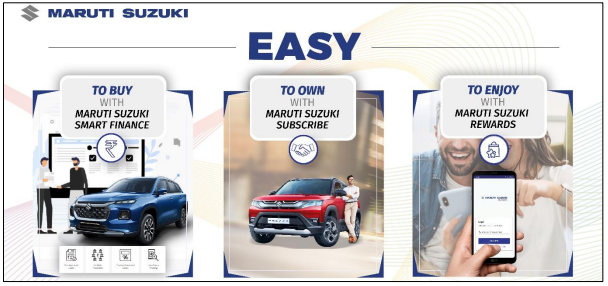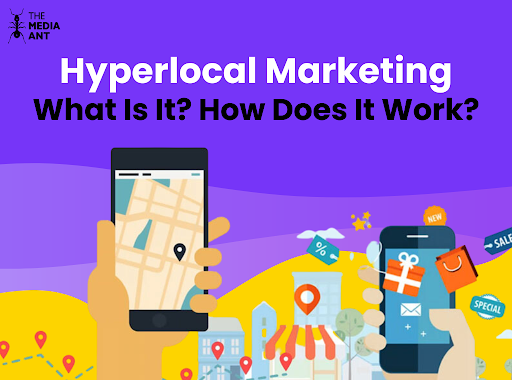Hyperlocal marketing has emerged as a pivotal strategy in today’s digital landscape, revolutionizing how businesses connect with local audiences. By leveraging precise geographic targeting and real-time data, hyperlocal marketing allows brands to deliver tailored messages to consumers based on their immediate location. This approach not only enhances relevance but also boosts engagement and conversion rates significantly. Understanding the intricacies of hyperlocal marketing is crucial for businesses aiming to thrive in a competitive marketplace.
What is Hyperlocal Marketing?
Hyperlocal marketing is a targeted form of marketing that focuses on reaching customers within a specific, localized area, often a community or neighborhood. The goal is to engage potential customers who are geographically close to a business and likely to visit or make a purchase. This approach leverages the unique characteristics and preferences of the local population to create highly relevant and personalized marketing messages.
What is Hyperlocal Advertising?
Hyperlocal advertising targets highly specific geographic areas, often within a radius of a few miles or even neighborhoods. It aims to engage with local communities by delivering personalized messages that resonate with their immediate needs and interests. This form of advertising leverages location-based data and technologies like geotargeting to reach consumers in real-time, often through mobile devices. By focusing on local context and relevance, hyperlocal advertising enhances relevance and response rates, making it an effective strategy for businesses aiming to connect intimately with their nearby audience and drive foot traffic to physical locations or increase online sales within specific geographic areas.
The Evolution of Local Marketing to Hyperlocal
Local marketing has undergone a dramatic shift, evolving from a focus on geographically defined areas to ultra-targeted, hyperlocal strategies. Traditionally, businesses relied on tactics like print ads in local newspapers and sponsoring community events. While these methods still hold value, the rise of the digital age has transformed the landscape.
Today’s consumers are increasingly reliant on online searches, particularly mobile searches using “near me” functionality. This has increased the need for hyperlocal marketing, which tailors messaging to an ultra-specific audience within a limited geographic area, often just a few blocks or a single neighborhood.
By leveraging local SEO, social media marketing with geofencing, and targeted online advertising, businesses can reach highly relevant customers with laser precision. This hyperlocal approach fosters deeper customer engagement, driving foot traffic and sales within a defined community.
The Importance of Hyperlocal Marketing
Hyperlocal marketing is crucial for businesses today due to several key reasons:
1. Precision Targeting
Hyperlocal marketing allows businesses to target consumers with extremely relevant and personalized messaging based on their immediate location. This precision targeting increases the likelihood of engagement and conversion because it aligns closely with the needs and preferences of nearby customers.
2. Enhanced Relevance and Engagement
By focusing on specific neighborhoods or even individual streets, businesses can create content and promotions that resonate deeply with local audiences. This localized approach enhances relevance, making customers more likely to respond positively and engage with the brand.
3. Boosts Foot Traffic and Local Presence
‘For brick-and-mortar businesses, hyperlocal marketing can significantly increase foot traffic by drawing nearby customers to their physical locations. It helps in building a strong local presence and fostering community relationships, which are essential for long-term customer loyalty and advocacy.
Why Businesses Should Embrace Hyperlocal Strategies
Businesses must embrace hyperlocal strategies to thrive in today’s digital world. Hyperlocal marketing allows for laser-focused targeting of high-intent customers within a specific geographic area. This translates to increased brand awareness, deeper customer connection, and ultimately, boosted sales and loyalty. By leveraging local SEO and targeted online outreach, businesses can effectively compete with larger brands and resonate with the unique needs of their immediate community.
The Benefits of Hyperlocal Marketing for Small Businesses
Hyperlocal marketing allows Small Businesses to precisely target their immediate community, maximizing relevance and engagement with local customers. By focusing on specific neighborhoods or even individual streets, small businesses can tailor their messages and promotions to resonate deeply with local interests and needs. This targeted approach not only boosts foot traffic and sales but also enhances brand visibility and credibility within the local market. Additionally, hyperlocal strategies are often more cost-effective compared to broader marketing campaigns, making them ideal for small businesses with limited budgets looking to maximize their marketing ROI locally.
How Hyperlocal Marketing Works
Hyperlocal marketing focuses on targeting potential customers in a highly specific, localized area. Here are five key points that explain how hyperlocal marketing works:
1. Geographic Targeting
Hyperlocal marketing narrows down the focus to a very precise geographical area, such as a neighborhood or even a specific street. This allows businesses to reach customers who are physically close to their location.
2. Personalized Messaging
It involves crafting marketing messages that are highly relevant to the local community. This could include referencing local events, landmarks, or community interests to resonate more deeply with the target audience.
3. Local SEO Optimization
Businesses optimize their online presence for local search engine results. This includes using location-based keywords, creating local business listings, and encouraging customer reviews to improve visibility in local searches.
4. Mobile and Location-Based Technologies
Hyperlocal marketing often leverages mobile devices and location-based technologies like GPS. This enables businesses to deliver targeted ads, promotions, or notifications directly to users based on their current location.
5. Community Engagement
Effective hyperlocal marketing goes beyond advertising and focuses on building relationships within the local community. This could involve sponsoring local events, participating in community initiatives, or supporting local causes to strengthen brand affinity locally.
5 Strategies for Effective Hyperlocal Marketing
Here are five strategies for effective hyperlocal marketing:
1. Local SEO Optimization
Focus on optimizing your website and online presence for local search queries. Use location-specific keywords, create local business listings (like Google My Business), and encourage customer reviews to improve local search rankings.
2. Geotargeted Advertising
Utilize geotargeting capabilities in online advertising platforms (such as Google Ads, Facebook Ads, etc.) to deliver targeted ads to users in specific geographic areas. This ensures your marketing messages reach the right audience at the right place and time.
3. Hyperlocal Content Marketing
Create content that resonates with the local community. This could include blog posts, articles, or social media content that references local events, news, or interests. Tailor your content to address local needs and preferences.
4. Local Partnerships and Sponsorships
Collaborate with local businesses, organizations, or influencers to extend your reach within the community. Sponsor local events, participate in community activities, or cross-promote with complementary local businesses to enhance brand visibility and credibility.
5. Location-Based Mobile Marketing
Leverage mobile marketing strategies that capitalize on users’ location data. This can include sending location-based notifications, offers, or promotions to customers when they are near your physical location or relevant points of interest.
Tools and Platforms for Hyperlocal Marketing
Best Tools for Hyperlocal Marketing
- Google My Business (GMB)
- Social Media Platforms (Facebook, Instagram, Twitter with location targeting)
- Sekel Tech
- Shopify (for local e-commerce)
- Local SEO tools
- Hyperlocal advertising platforms (available through agencies or media companies)
How to Use Google My Business for Local SEO
- Optimize Your Profile: Fill out all sections of your Google My Business profile completely and accurately, including business name, address, phone number (NAP), business hours, and categories.
- Get Reviews: Encourage satisfied customers to leave reviews on your Google My Business listing. Respond to reviews, both positive and negative, to show engagement and improve credibility.
- Post Regular Updates: Use the Posts feature to share updates, events, promotions, and offers. This helps keep your listing active and improves visibility in local searches.
Geo-Fencing and Location-Based Advertising
- Targeted Audience Reach: Geo-fencing uses GPS, RFID, Wi-Fi, or cellular data to create virtual boundaries around specific geographic areas. Marketers can then deliver targeted advertisements or messages to users who enter these predefined zones.
- Personalized Messaging: Location-based advertising allows marketers to tailor their messages based on a user’s real-time location. This personalization enhances relevance and increases the likelihood of engagement by delivering content that is contextually relevant to the user’s current situation or surroundings.
- Enhanced Conversion Rates: By targeting consumers when they are in proximity to a business or relevant location, geo-fencing and location-based advertising can significantly enhance conversion rates. This is because users are more likely to respond to offers or promotions that are immediately relevant to their physical location or needs at that moment.
Challenges of Hyperlocal Marketing
1. Targeting Accuracy
Ensuring precise targeting within small geographic areas can be challenging. Marketers must accurately define and reach their intended audience within specific neighborhoods or localities.
2. Data Accuracy and Availability
Hyperlocal marketing relies heavily on accurate and up-to-date location data. Obtaining reliable data sources and maintaining their accuracy can be difficult, impacting the effectiveness of campaigns.
3. Competitive Landscape
Local markets can be highly competitive, especially in densely populated areas. Standing out among local competitors and capturing market share requires strategic differentiation and compelling value propositions.
4. Resource Allocation
Allocating resources effectively to hyperlocal campaigns can be tricky. Balancing the costs of targeting small geographic areas against potential returns requires careful budgeting and planning.
5. Consumer Privacy Concerns
Targeting consumers based on their precise location raises privacy concerns. Marketers must navigate regulatory requirements and consumer sensitivities regarding data privacy and opt-in/opt-out preferences to maintain trust and compliance.
Examples of Successful Hyperlocal Marketing Campaigns
1. Lifebuoy’s Disease Alert System

This campaign by Lifebuoy soap addressed the specific needs of smaller towns and villages. They created an alert system to warn residents about potential outbreaks of diseases threatening children. This hyperlocal approach, leveraging local communication channels, not only protected communities but also garnered recognition, winning awards at Cannes Lion.
2. Tata Tea Premium’s City-Specific Packaging

Tata Tea Premium understood the power of local connection. They designed packaging specific to different cities in India. For instance, Delhi packaging might feature iconic Delhi monuments. This seemingly simple tactic resonated with consumers, creating a sense of familiarity and strengthening brand loyalty within each targeted location.
3. Maruti Suzuki’s Digital Lead Generation

Maruti Suzuki recognized the growing importance of online searches, particularly local mobile searches. By implementing a hyperlocal digital marketing strategy, they achieved significant results. A substantial portion, around 30% of their car sales, were driven by leads generated through this hyperlocal approach. This exemplifies the effectiveness of targeting local online searches with relevant messaging.
Conclusion
In conclusion, hyperlocal marketing represents a paradigm shift in how businesses engage with consumers at the grassroots level. By harnessing the power of location-based targeting and personalized messaging, brands can forge deeper connections with their local communities, driving foot traffic, online sales, and brand loyalty. As technology continues to evolve, the potential of hyperlocal marketing to deliver targeted, impactful campaigns will only grow, making it an indispensable tool for businesses looking to stay ahead in an increasingly localized and personalized digital ecosystem.
FAQs on Hyperlocal Marketing
1. What is an example of hyperlocal marketing?
An example of hyperlocal marketing is a coffee shop using geotargeted ads on social media to promote a limited-time discount to users within a one-mile radius. This strategy effectively drives foot traffic by appealing directly to nearby customers’ immediate needs and preferences.
2. How to create hyperlocal content?
To create hyperlocal content, focus on local events, trends, and interests. Use local language and references, feature local influencers or customers, and address specific community concerns or interests. Tailor content to resonate deeply with the target audience in a specific geographic area.
3. What is the future of hyperlocal marketing?
The future of hyperlocal marketing lies in advanced data analytics, AI-driven personalization, and IoT integration. It will enable real-time, highly targeted campaigns based on precise consumer behavior and location data, fostering deeper connections between businesses and local communities for enhanced engagement and ROI.
4. What is hyperlocal business model in India?
In India, hyperlocal business models typically involve platforms that connect local service providers (like food delivery, home services) with nearby consumers through mobile apps. These models optimize logistics, leverage local knowledge, and offer convenient, on-demand services tailored to specific neighborhoods or cities.





